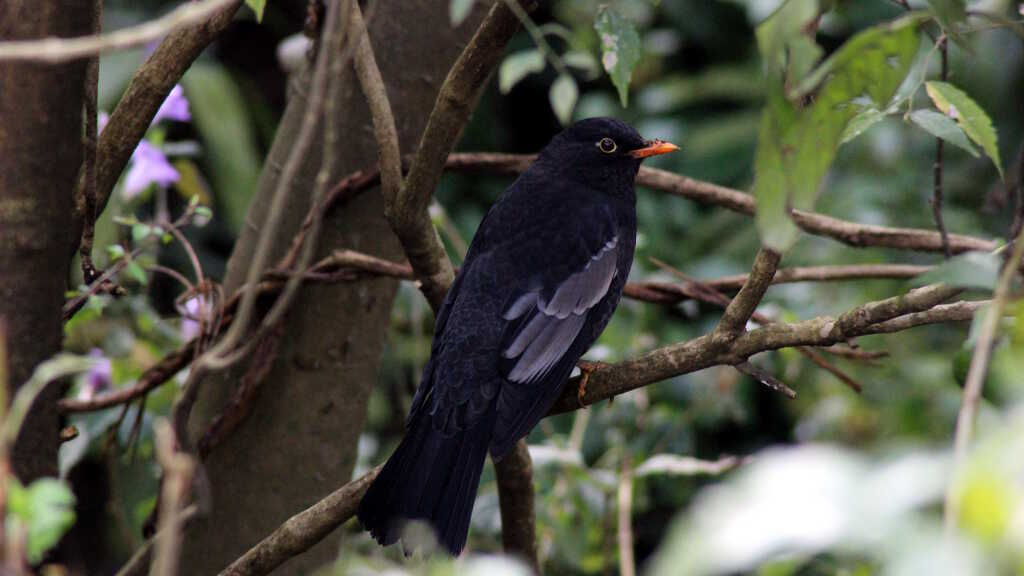
Turdus boulboul (Grey-winged Blackbird)
The Grey-winged blackbird (Turdus boulboul) is a striking and melodious thrush that resides in the montane forests of the Great Himalayan National Park (GHNP). Known for its rich flute-like song and elegant plumage, this species is a highlight for birdwatchers visiting the Himalayan region. It contributes significantly to the avifaunal diversity of GHNP, particularly in mixed and coniferous forests between 1,800 and 3,000 meters.
Identification and Appearance
Male grey-winged blackbirds are deep black with contrasting pale grey wings, while females are browner overall with subtle grey wing tones. The bright orange-yellow bill and eye-ring stand out against their dark plumage. Measuring around 24 cm, they are medium-sized among Himalayan thrushes and have a strong, upright posture when perched.
Habitat and Distribution in GHNP
In the Great Himalayan National Park, these birds are most commonly seen in oak-rhododendron forests, dense undergrowth, and forest clearings. They prefer shaded environments with dense canopy cover and are especially active during early mornings and late afternoons. The grey-winged blackbird is resident in the Himalayas but may descend to lower elevations during the colder months.
Song and Behavior
One of the most notable features of the grey-winged blackbird is its melodious, flute-like call. Males sing from high perches during the breeding season to attract mates and mark territory. These birds are generally solitary or found in pairs, foraging on the forest floor for insects, earthworms, and berries.
| Common name | Grey – winged Blackbird |
| Scientific name | Turdus boulboul |
| Family | Turdinae |
| Description | It is a resident bird of Himalayas. Male having black, with greyish wing panel. Female having olive-brown, with pale rufous-brown wing panel. Juvenile has orange-buff streaking on upperparts, and very variable orange-buff markings on underparts. It is commonly found in an altitudinal range of 1800-2700m and in winters it migrated towards lower altitudes. |
Ecological Role and Conservation
As both insectivores and frugivores, grey-winged blackbirds help control insect populations and disperse seeds, playing a vital role in the forest ecosystem. While currently listed as a species of Least Concern, ongoing habitat preservation in areas like GHNP is essential to maintaining their stable population.



